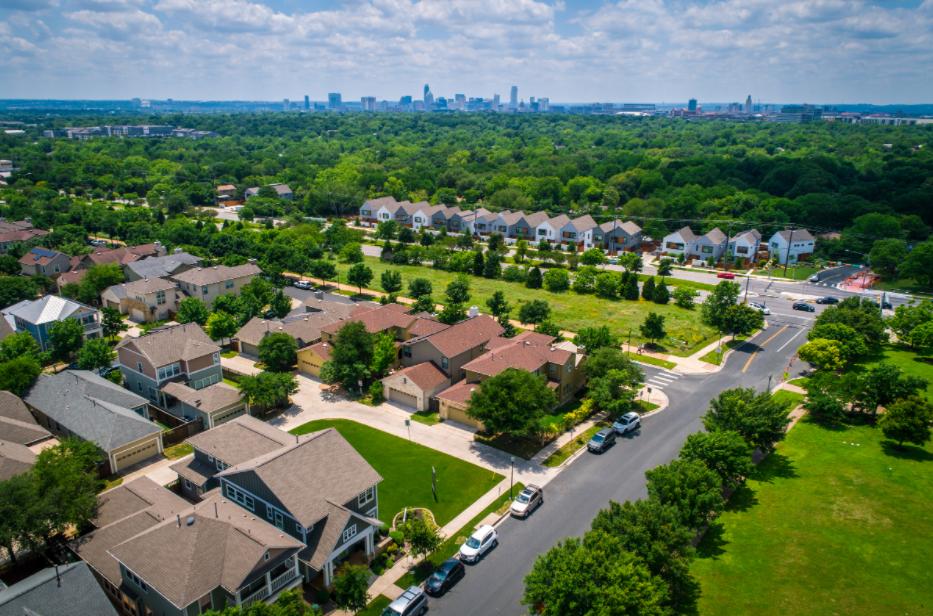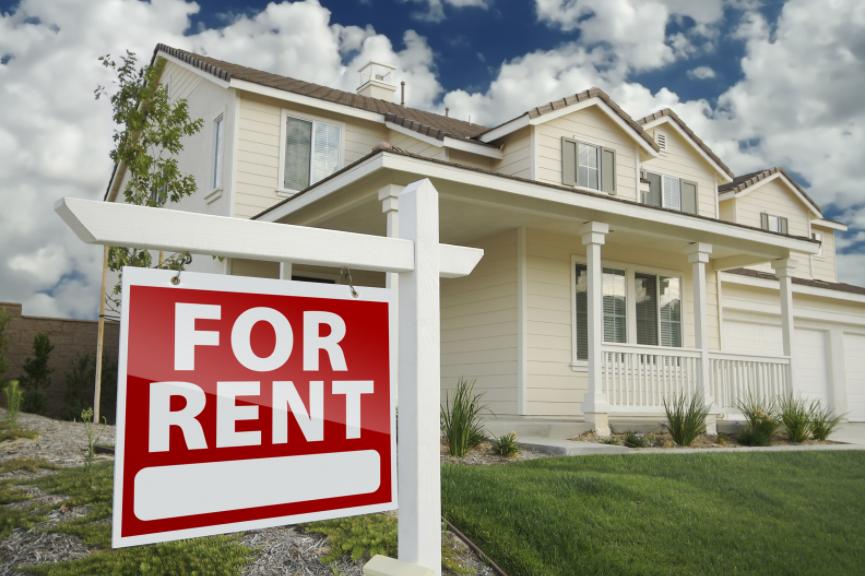There is no denying that from the highest home prices to the lowest number of homes for sale, the COVID-19 pandemic has turned the U.S. real estate market upside down, so who are the real winners and who are the real losers in this real estate market reshuffle?
Winners
1. Florida
Key statistics: More than 300,000 people moved to Florida from April 2020 to April 2021.
Although this date is not entirely true based on the latest data from the Office of the Economic and Demographic Research in Florida, hundreds of thousands of people did migrate in 2021. They are attracted primarily by the warm weather, beautiful beaches, no income taxes, and relatively attractive housing prices.
Ali Wolf, a chief economist at Zonda - a construction consulting firm, said that “During the period of the pandemic, Florida became a hotbed for people fleeing the Northeast and Midwest.” and "increased demand at a time when inventory was scarce had pushed up home prices and rents."
While interest in Florida remains high among New Yorkers and other East Coasters, the number of buyers from other out-of-state locations is also expanding. In 2021, more and more people moved from as far away as California, and many workers moved to remote areas, which was unheard of just a few years ago.
It’s not just hotspots like Miami that are gaining traction; it’s actually happening all over the state. The median asking price for overall homes in Florida in November 2021 increased by 19% compared to 2020.

2. Suburban Housing
Key statistics: Suburban home buyers jumped to 42%.
People renting in dense metropolitan areas are fleeing in droves when the perks of city living suddenly disappear. Owing more space for a home gym, a large backyard where you can safely entertain, and more space between neighbors suddenly becomes more desired than a small apartment with shared elevators and laundry facilities.

Suburban living is now more popular with younger homebuyers. Buyers flock to the suburbs, leading to fierce bidding wars, wild offers above asking prices, and people willing to waive home inspections and homebuyer protection clauses. An analysis by Realtor.com’s economic research team shows that the number of suburban shoppers is up 42% this year over the pre-epidemic period. All these extra competitions are pushing up suburban home prices.
In 2020, suburban home prices rose higher than urban areas for the first time since 2017. in September, the median price per square foot in the suburbs was 28% higher than before the epidemic, while urban home prices increased by 25%.
The typical home sale in the suburbs accelerated by about three weeks this September compared to September 2019, while city home sales accelerated by 16 days over the same period.
3. Baby Boomers
Key statistics: Median-priced homes have an average profit margin of $100,178.
In an extreme seller’s market, older Americans who own homes appear to be the ones who will hold the majority of properties in 2021. They are the most likely to own a large home to sell, as many are trading up to smaller homes or want to be closer to family and friends. In many cases, they will be able to sell their homes for a large profit.

In fact, according to real estate information firm ATTOM Data Solutions, the average profit margin on a median-priced home exceeded $100,000 in the summer of 2021, the highest level since the end of the financial crisis.
Wolfe explains that “Baby boomers are the most likely cohort to own a home and invest in stocks, which have risen in value in the past year.” “Baby boomers who sell and move into smaller, cheaper homes have the highest sales revenue and can often make more competitive offers on new locations.”
4. Wall Street investors
Key statistics: Investors account for 5.5% of home purchases
Buyers vying for affordable detached homes in the suburbs in 2021 include large real estate investors with deep pockets and first-time homebuyers. Unlike most first-time homebuyers, many investors have enough to provide all the cash for these homes and turn them into rentals.
According to an analysis of deed records by Realtor.com earlier in 2021, investors’ share of the market was at its highest level since 2015. investors accounted for 5.5% of all home purchases in the first seven months of 2021. Many are profiting from the severe housing shortage, which is not expected to be resolved in the next few years.
George Ratiu, economic research manager at Realtor.com, said, "Investors see a huge opportunity in this imbalance.”
5. Homeowners refinancing their mortgages
Key statistics: Mortgage rates hit a record low of 2.65%
Low-interest rates mean buyers can stretch their budgets further as prices rise, but homeowners who can refinance their existing loans are definitely the big winners in 2021. Those who already own a home will be able to save $100 or more a month on their mortgage - ultimately saving tens of thousands of dollars over the life of the loan.
According to Freddie Mac, rates bottomed out in the first week of 2021, when the average 30-year fixed mortgage rate dropped to a record low of 2.65%. At the same time, the most recent 30-year loan rate has been the highest since 2018 (Before the epidemic hit two years ago, the rate was around 3.7%).
George Ratiu, an economic research manager, said that “The low point we saw in mortgage rates is unlikely to happen again.”
Losers
1. Millennials
Key statistics: First-time homebuyers spent 9.6% more money on their homes.
Today, it’s not easy to be a first-time homebuyer. As millennials enter their peak home-buying years in 2021, they find themselves in a real estate market.
According to the National Association of Realtors (NAR), millennials, now between the ages of 25 and 40, accounted for the largest share of buyers last year - 34%. But even as they make sacrifices for a down payment and work to improve their credit scores, they are having a hard time finding their dream home, let alone one in their price range.

According to a recent NAR report, with more people looking for homes than ever before, most buyers will need to pay the asking price (or more) for a listed home this year. According to NAR’s report, first-time buyers will spend a median of $252,000 on a home in 2021, up from $230,000 in 2020. To do so, most people tell NAR they will have to make financial sacrifices to save for a home and purchase a home with an average size of 1,640 square feet, nearly 400 square feet smaller than a second-time buyer's home.
“First-time buyers typically look for homes in the most competitive areas of the market,” says economist Wolfe, “and the least expensive homes are ideal for first-time buyers, lower-priced buyers, lower-income people, investors, and even some higher-priced buyers. “
“Sellers usually choose what they think is the most likely offer to pass. First-time homebuyers have little chance when competing with high-wealth individuals,” Wolfe said.
2. Austin, Texas
Key statistics: Rents have gone up by 30%
Austin, the capital of Texas, was already growing at a good pace before the epidemic, with unprecedented growth starting in 2020 - with accelerating gains in 2021 and growth in new tech company expansion. Austin is one of the most popular destinations for remote workers in 2021, thanks to its hip, youthful culture and housing prices that are still much cheaper than those in the San Francisco Bay Area.

Although population growth is usually a good thing for the local economy, this relatively small city doesn’t have enough housing available for sale or rent to handle the influx of people. That one problem became even more apparent after Elon Musk announced that Tesla was moving its headquarters to Austin.
According to Realtor.com, the influx of buyers and low housing inventory has pushed the metro's median asking price about 50% higher than it was before the epidemic. Last October, the median asking price for homes was as high as $550,000, discouraging many potential buyers.
Renters aren’t having much luck, either. According to an analysis by Realtor.com, the overall median rent in Austin reached $1,700 in October 2021, up about 30% from the same period a year ago.
“Affordability will be an issue for the Austin housing market going forward,” said Luis Bernardo Torres, a research economist at Texas A&M University’s Texas Center for Real Estate Research.
3. Home flippers
Key statistics: Home flippers’ profit per home has decreased by 7%.
According to a Realtor.com analysis of deed records, last year saw a record number of property flippers and resellers, but profits shrank. Profits from April through June of this year were the lowest since 2008. The average profit on property flipping is about 43% of the cost, but that doesn’t consider the cost of hiring contractors and paying for materials such as lumber and appliances. Typically, flipping resellers have sought a return on investment of more than 50% of the cost in previous years.
With high demand for homes and rising prices, people whole refurbished to resale need to spend more money to secure a home. The record low number of homes for sale means they often have to pay more and beat competition from first-time buyers and other investors. Rising construction and appliance costs and delays due to global supply chain shortages have severely impacted their profits.
4. Renters
Key statistics: rents rose by 9%
At the start of the epidemic, rental prices plummeted in many larger, more expensive cities along the coast. Many residents who suddenly no longer needed to commute five times a week relocated to cheaper areas or suburbs.
But data show that at present, rents have not only recovered, but also hit record highs, and renters are suffering. So far this year, rents have risen about 9% nationwide, and in some areas (such as Austin), rents have risen more than 30%.

“It’s indeed a double whammy, especially for renters this year,” says George Ratiu, “The first is the expiration of the eviction moratorium earlier this year, and the second is the dramatic rebound in rental prices.”
At the same time, buying a home has become increasingly unaffordable, leaving renters in the lurch.
5. San Francisco Bay Area
Key statistics: More than 31% of people are leaving San Francisco.
As remote work became the norm for many tech workers, people in San Francisco started to rethink why they spent so much money to live in their precious city by the bay? So they made some actions, many looking for cheaper, nearby alternatives, and moved to Reno, Seattle and Phoenix. Much of the reason that prople moved to Texas from Tesla was that workers could no longer afford a home near their office.
Wolfe said, "Even before the epidemic, the Bay Area was already a market where housing was in short supply, especially those considered entry-level homes.”
Many expanded their home searches when renters realized they couldn’t afford a Bay Area home and moved elsewhere. According to a nonpartisan California Policy Lab report, the number of people leaving San Francisco has increased by 31%. At the same time, the number of people moving in fell by 21%.
But despite this massive exodus, home prices have somehow become more unaffordable. According to an analysis by the Compass, the median home price in the San Francisco metro area increased by 20% from the spring to the fall of 2021.
This is even more evident in counties outside the city. Affluent buyers who are looking for larger homes are driving home prices even higher in these communities.
Articles Sharing:
Statement:
This article was edited and compiled by AAA LENDINGS, the copyright belongs to AAA LENDINGS website, it doesn't represent the position of this website, and is not allowed to be reprinted without permission.
阅读原文 阅读 1347



